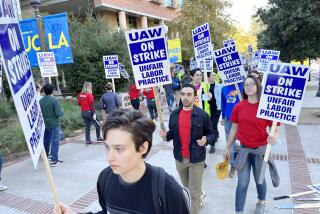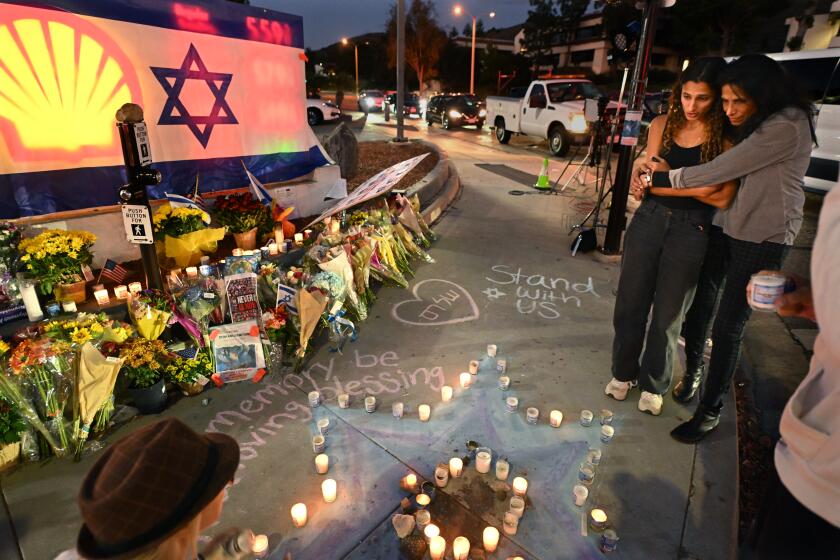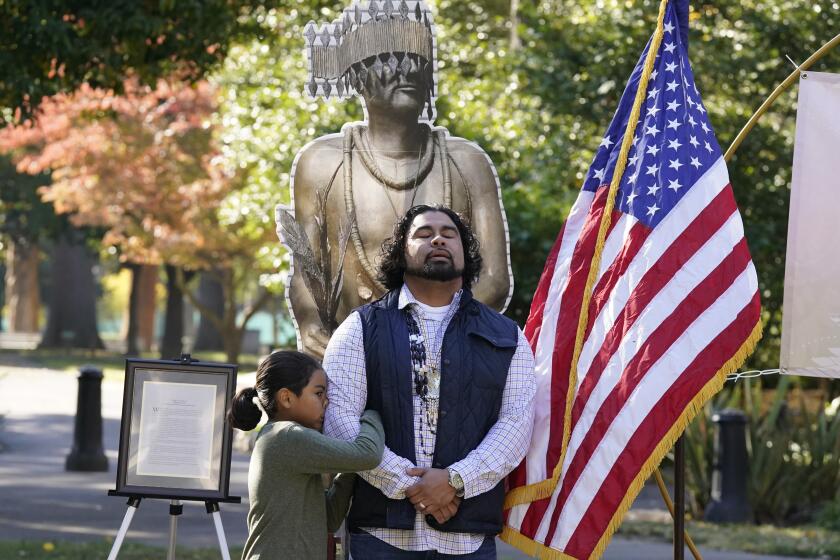Impact of 3 Strikes Less Than Expected
California prison officials Thursday significantly scaled back estimates of the number of inmates who are being sentenced under the three strikes law, saying the measure’s impact has been less than expected.
The new numbers--which show a leveling off in the rate of increase--will mean that California won’t need to build as many new prisons or add them quite as quickly as thought even six months ago.
It also reflects a declining crime rate statewide, officials said, and a trend being seen nationally.
The announcement comes two years after three strikes was signed into law. Department of Corrections officials now say state prisons will be housing 181,000 inmates by the turn of the century, rather than the 230,000 they projected in March 1994.
Among the reasons for the lower than expected increase, judges are not imposing sentences quite as severe as many officials originally thought. Another reason is that increases have leveled off in the numbers of felons facing non-three strikes sentences.
“There is no doubt that the impact of three strikes is not as great as it was expected,” Jerry Becket, chief of the estimates and statistics section of the Department of Corrections, said at a news conference.
The projected 181,000 inmates by 2000 represents an increase of 40,000 from today’s prison population. As recently as May, corrections officials predicted that there would be 203,000 inmates by 2000.
At that time, officials warned that they would run out of beds by 1998. Based on Thursday’s predictions, prison authorities say they will run out of beds by 2001.
The new numbers could help break an impasse between Gov. Pete Wilson and the Legislature.
Wilson has called on the Legislature to fund as many as six new prisons at a cost of $2 billion. Lawmakers have refused, with some demanding that the state’s sentencing system be overhauled, and others demanding that prison construction costs be lowered.
Even with the lower than expected rate of increase, the state will need roughly four new prisons--23,000 new prison beds--by 2001, said Ernie Van Sant, chief of prison construction. California now has 32 prisons.
According to prison officials, judges, invoking a provision that permits them to double the terms of felons facing a second conviction, are imposing sentences that average slightly less than five years.
Prison officials originally assumed that judges would impose average sentences of eight years on two-time losers. As it was written, the three-strikes law was vague on whether judges would be required to impose the longer sentences on second-time offenders.
Prison statistician Dick Welch said one reason for the lighter than expected sentences appears to be that judges and prosecutors are offering second-time offenders lower sentences in exchange for guilty pleas.
If that is true, it would run counter to what promoters of three strikes sought--strict limits on plea bargaining.
The second-strike provision is by far the most widely used part of the law. Since the measure took effect in May 1994, 19,600 felons have been sentenced to prison terms under the provision that permits a doubling of terms for felons facing a second conviction.
Another 2,466 inmates are three-time losers and have been sentenced to prison under the provision that requires minimum sentences of 25 years to life for criminals convicted of a third felony.
More to Read
Start your day right
Sign up for Essential California for news, features and recommendations from the L.A. Times and beyond in your inbox six days a week.
You may occasionally receive promotional content from the Los Angeles Times.






